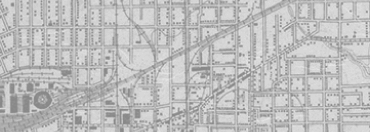


Back
Courtroom sketch Lt. Col. Bringer at Jack Ruby trial dated March 11, 1964
Courtroom pencil sketch on paper by Charles Fisher. The sketch shows state witness Lt. Col. Alfred H. Breninger during the trial of Jack Ruby on March 11, 1964. The sketch shows Lt. Col. Breninger seated in the witness stand wearing a suit with his hands clasped around a pistol. The caption in the top right reads "Lt. Col. Bringer USAR 3/11/1964," and the caption in the bottom right reads "Pistol expert for the state - Jack Ruby murder trial."The artist's signature: "Fisher" is at the bottom right, underneath the caption. Charles "Chuck" Fisher was the art director at KRLD-TV in 1963. Fisher made the pencil sketches during the trial of Jack Ruby for KRLD-TV after the judge barred cameras from the courtroom.
Courtroom sketch Lt. Col. Bringer at Jack Ruby trial dated March 11, 1964
03/11/1964
Paper
14 × 17 in. (35.6 × 43.2 cm)
Chuck Fisher Collection/The Sixth Floor Museum at Dealey Plaza
2004.020.0002
KRLD-TV art director Charles Fisher misspelled this state witness's last name as "Bringer" on his sketch from Wednesday, March 11, 1964. At the time of the Jack Ruby trial, Lt. Col. Alfred H. Breninger, U.S. Army, retired, worked in the civil service for the U.S. Army Reserves in Dallas, specifically in the Third Howitzer Battalion, 12th Artillery, 90th Infantry Division. The prosecution, represented by Assistant D.A. Jim Bowie, briefly questioned Lt. Col. Breninger about firing a gun using one's middle finger rather than index finger. According to Breninger, use of a middle finger "is a means of directing that pistol, what we call instinct shooting, or shooting in a hurry where you don't have time to use the sights and it's point shooting. A defensive shooting." In short, contrary to the defense argument that Ruby's firing of his gun using his middle finger was due to him being in a fugue or automatic state at the time, the prosecution used this testimony to demonstrate that it was not particularly uncommon to use one's middle finger. Defense attorney Joe Tonahill argued that a shooter (presumably in the right state of mind) would hesitate to use the middle finger because of the possibility that escaping gases from the gun could slightly burn a person's hand. -- Stephen Fagin, Curator
Courtroom sketch Lt. Col. Bringer at Jack Ruby trial dated March 11, 1964
Courtroom pencil sketch on paper by Charles Fisher. The sketch shows state witness Lt. Col. Alfred H. Breninger during the trial of Jack Ruby on March 11, 1964. The sketch shows Lt. Col. Breninger seated in the witness stand wearing a suit with his hands clasped around a pistol. The caption in the top right reads "Lt. Col. Bringer USAR 3/11/1964," and the caption in the bottom right reads "Pistol expert for the state - Jack Ruby murder trial."The artist's signature: "Fisher" is at the bottom right, underneath the caption. Charles "Chuck" Fisher was the art director at KRLD-TV in 1963. Fisher made the pencil sketches during the trial of Jack Ruby for KRLD-TV after the judge barred cameras from the courtroom.
Courtroom sketch Lt. Col. Bringer at Jack Ruby trial dated March 11, 1964
03/11/1964
Artist
Sketches
Trials
Witnesses
Pistols
Firearms
Artwork
Jack Ruby trial
Fisher, Charles
KRLD-TV
Dallas
Paper
14 × 17 in. (35.6 × 43.2 cm)
Chuck Fisher Collection/The Sixth Floor Museum at Dealey Plaza
2004.020.0002
KRLD-TV art director Charles Fisher misspelled this state witness's last name as "Bringer" on his sketch from Wednesday, March 11, 1964. At the time of the Jack Ruby trial, Lt. Col. Alfred H. Breninger, U.S. Army, retired, worked in the civil service for the U.S. Army Reserves in Dallas, specifically in the Third Howitzer Battalion, 12th Artillery, 90th Infantry Division. The prosecution, represented by Assistant D.A. Jim Bowie, briefly questioned Lt. Col. Breninger about firing a gun using one's middle finger rather than index finger. According to Breninger, use of a middle finger "is a means of directing that pistol, what we call instinct shooting, or shooting in a hurry where you don't have time to use the sights and it's point shooting. A defensive shooting." In short, contrary to the defense argument that Ruby's firing of his gun using his middle finger was due to him being in a fugue or automatic state at the time, the prosecution used this testimony to demonstrate that it was not particularly uncommon to use one's middle finger. Defense attorney Joe Tonahill argued that a shooter (presumably in the right state of mind) would hesitate to use the middle finger because of the possibility that escaping gases from the gun could slightly burn a person's hand. -- Stephen Fagin, Curator









